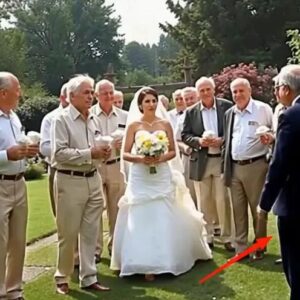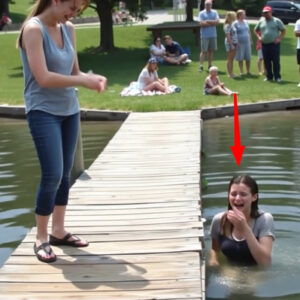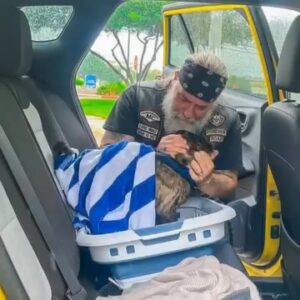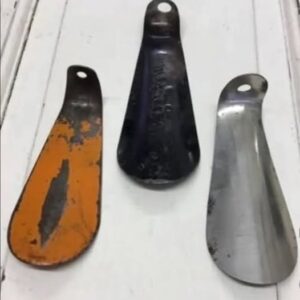She sent me this photo thinking it was adorable. “Majestic, right?” she texted. But I couldn’t stop staring at the lion’s paw. It wasn’t swiping or scratching. It was pressed flat—mirroring my niece’s tiny hand, like it recognized her. And the eyes. They weren’t wild. They were locked on her. Like it knew something no one else did. I asked which zoo they went to. She said the name, then paused. “You’re not gonna believe this,” she added, “but the keeper pulled me aside after.” Apparently, this lion doesn’t interact.
Barely moves when crowds come by. Hasn’t responded to a visitor in almost six months. Until my niece walked up. Then it stood. Crossed the enclosure. Sat directly in front of her and lifted its paw. Like a greeting. Or a memory.
The keeper had been working there for almost twenty years. He told my sister that in all his years, he had never seen the lion act like that. Normally, the big cat just lounged in the far corner of the enclosure, indifferent to the world. Yet, something about my niece made him get up and walk over. “It was like he recognized her,” the keeper said, scratching his head in disbelief.
When my sister told me all this later on the phone, she laughed nervously. “I mean, it’s just a coincidence, right?” But her voice carried doubt. She couldn’t explain why the keeper looked so unsettled when he said it.
I didn’t want to worry her, but something about the story stuck with me. That night, I couldn’t sleep. I kept thinking about the photo—my niece’s tiny hand pressed against the glass, the lion’s massive paw matching hers perfectly. The animal’s eyes seemed to burn through the screen. Not aggressive. Not fearful. Just focused.
The next day, I decided to do a little research about the zoo. It wasn’t a huge place, just a modest city zoo. But as I dug deeper, I found something interesting. The lion, named Atlas, had been rescued from a private owner years ago. The reports said he had been malnourished, neglected, and barely alive when the zoo took him in. Most people assumed that was why he never engaged with crowds—he’d lost trust in humans.
I didn’t mention my late-night research to my sister at first. But when she brought up the zoo again a week later—saying my niece kept asking to go back—I told her what I’d read. She went quiet for a moment, then said, “That makes it even stranger, doesn’t it? If he doesn’t like people, why would he react to her?”
Her words made my stomach twist.
The following weekend, my sister decided to take her daughter back. This time, I went with them. I needed to see it for myself.
When we arrived, the zoo was buzzing with families. Kids ran from exhibit to exhibit, parents trailed behind carrying sodas and popcorn. But the moment we approached the lion enclosure, I could feel the difference. The crowd in front of the glass was loud, but Atlas stayed curled in the corner, his golden mane unmoving. He looked like a statue.
Then my niece broke free from her mom’s hand and ran right up to the glass. She pressed her palms against it, giggling. That’s when Atlas lifted his head. Slowly. Deliberately. His eyes locked onto hers.
A hush fell over the people around us. I swear you could feel the air change. Atlas stood, muscles rippling beneath his fur, and padded over to the glass. He stopped directly in front of my niece and, just like in the photo, raised his paw. Perfectly aligned.
Gasps rippled through the crowd. Parents pulled their kids back nervously, but my niece just laughed and pressed harder against the glass. “Hi, kitty,” she said softly.
I couldn’t breathe.
The keeper, the same man from before, came rushing over. His face was pale. “It’s happening again,” he muttered. He turned to us, eyes darting between my sister, my niece, and the lion. “Would you mind staying a little longer? I need to… I need to observe this.”
So we stayed. For almost an hour, Atlas didn’t move away from my niece. He followed her when she walked along the glass, sat down when she sat down, and even seemed to mimic her movements. It was as if they were in some kind of silent conversation.
The keeper finally spoke again. “I can’t explain this,” he admitted. “But I think… I think your daughter reminds him of someone.”
“Someone?” my sister repeated, confused.
He nodded. “Animals remember kindness. They remember faces. It’s possible she resembles someone from his past.”
That night, after we left, my niece fell asleep in the car instantly. My sister and I sat in silence for a while before she finally said, “You know who she looks like, don’t you?”
I froze. Because I did.
She looked like our mother.
Our mom had passed away years before my niece was born. But the resemblance was undeniable—same dark eyes, same soft smile. And suddenly, I remembered something I had read in those old rescue reports. The lion’s first caretaker at the zoo, the one who nursed him back to health, was a woman. A volunteer who spent months sitting by his cage, feeding him by hand, earning his trust. Her name? Evelyn. My mother’s name.
I felt a chill run through me.
The next week, we went back again. This time, the keeper was waiting for us. He’d pulled old files, photos of Atlas from his early days at the zoo. And in those photos was Evelyn—the volunteer. She wasn’t our mother, but the resemblance was shocking. Same eyes. Same gentle presence. She had been the one who saved him when he was at his weakest.
And now, years later, Atlas seemed to see a piece of her in my niece.
The keeper told us something else that shook me. “The day she stopped coming,” he said, “was the day Atlas stopped responding to anyone. He just… shut down.”
It all made sense now. My niece wasn’t just another visitor. She was a reminder of the only person Atlas had ever trusted.
Over the next few months, we kept visiting. And each time, the bond grew stronger. My niece would sit by the glass for hours, talking to Atlas in her sweet, childish voice. Sometimes he’d lie down and close his eyes, like her presence calmed him. Other times, he’d follow her every move, as if protecting her.
News spread quickly. People started coming to the zoo just to see the little girl and the lion. Some thought it was heartwarming, others whispered it was eerie. But one thing was clear: Atlas had come alive again.
Then came the twist none of us expected. One afternoon, the keeper asked to speak with my sister privately. I waited with my niece by the enclosure while they talked. When my sister returned, her face was pale.
“What’s wrong?” I asked.
She swallowed hard. “They want her to help with something. Something important.”
The zoo had been considering transferring Atlas to a larger wildlife sanctuary. But the staff worried about his ability to adjust after years of isolation. They believed my niece might be the key to helping him transition—her presence could give him the trust he needed to accept the move.
At first, my sister was hesitant. The idea of her daughter being involved with such a huge animal scared her. But after a long conversation, she agreed to let her try—under strict supervision.
The day of the transfer, my niece stood near the transport crate, talking softly while Atlas paced nervously inside. The handlers watched in awe as he gradually calmed down, pressing his paw against the bars closest to her. With her encouragement, he walked into the crate willingly, something they had feared would be impossible.
The entire zoo staff erupted in applause. One of them whispered, “That little girl just saved him.”
Months later, we visited Atlas at his new sanctuary. The enclosure was vast, with grass, trees, and room to roam. When my niece approached the glass wall, Atlas ran across the field to greet her, paw raised just like before.
But this time, there was something different in his eyes. Not just recognition. Gratitude.
On the drive home, my sister finally let her emotions spill. “I think Mom had something to do with this,” she said quietly. “Like she’s still watching over us… and him.”
I didn’t argue. Because deep down, I believed it too.
The story spread beyond our town. Reporters came, articles were written, and people shared it online. Some called it a miracle, others just a coincidence. But for us, it was a reminder of something bigger. That kindness—whether from a mother who once saved a starving lion, or from a little girl who reminded him of her—never disappears. It lives on, passed down in ways we can’t always explain.
And maybe that’s the lesson here. The smallest gestures can ripple through time, connecting lives in ways we’d never imagine. A hand against glass. A lion’s quiet trust. A bond that defied fear.
Every time I think back to that first photo, I realize it wasn’t just cute. It was the start of a story about compassion, memory, and the invisible threads that tie us all together.
So if you’ve ever doubted whether kindness matters, remember Atlas. Remember the little girl he chose to see. And remember that even when years pass, even when we’re gone, the love we give leaves a mark the world won’t forget.
If this story moved you, share it with someone who needs a reminder that compassion never fades—and that sometimes, even the fiercest hearts recognize it when they see it.





